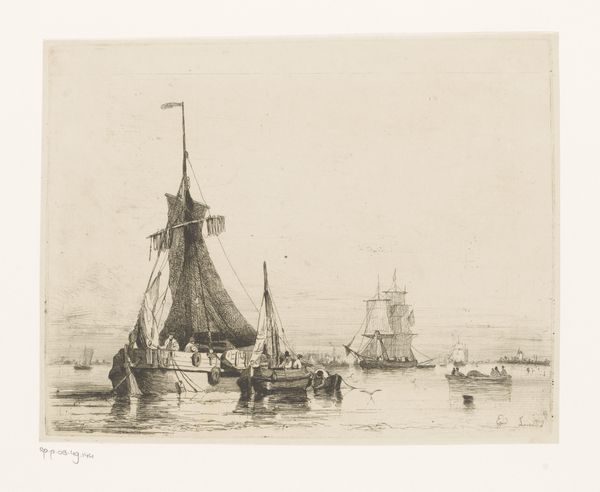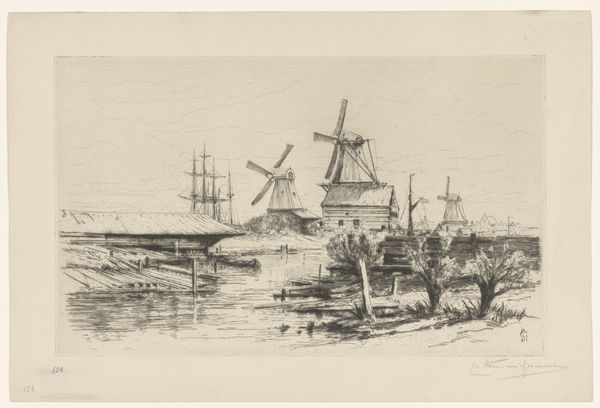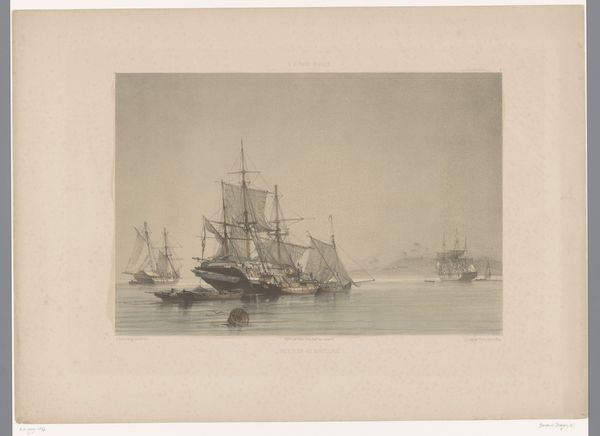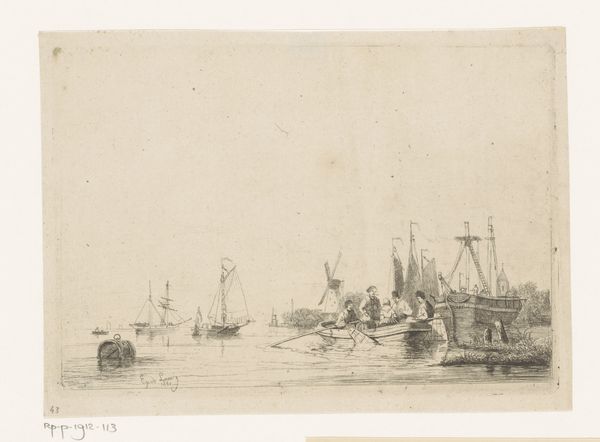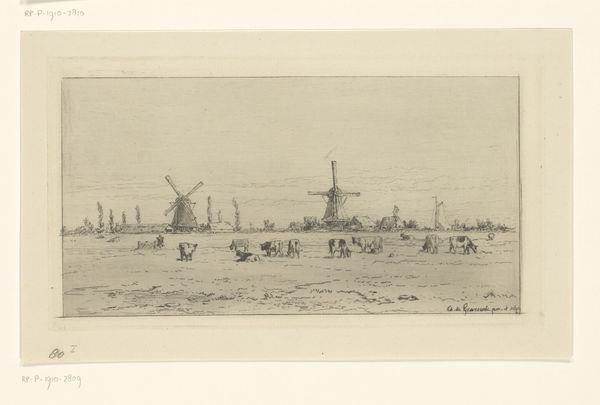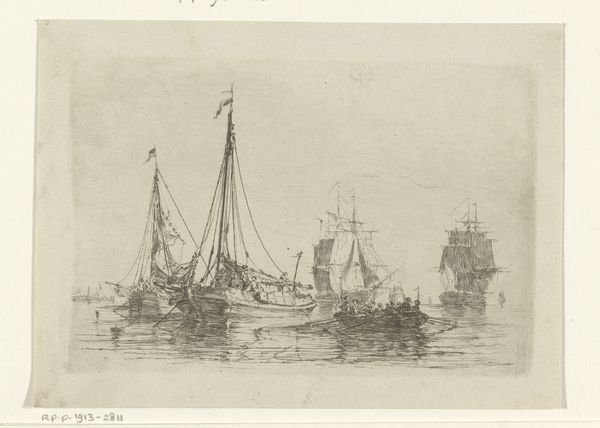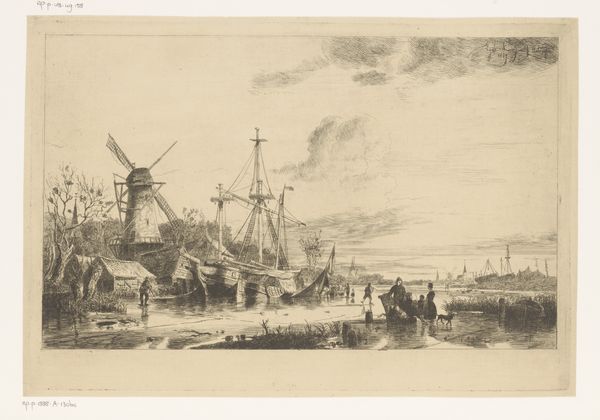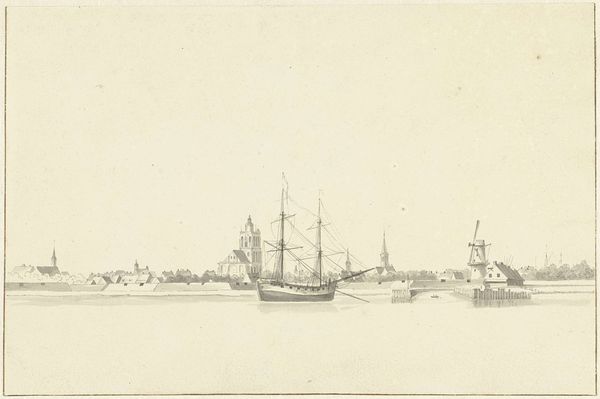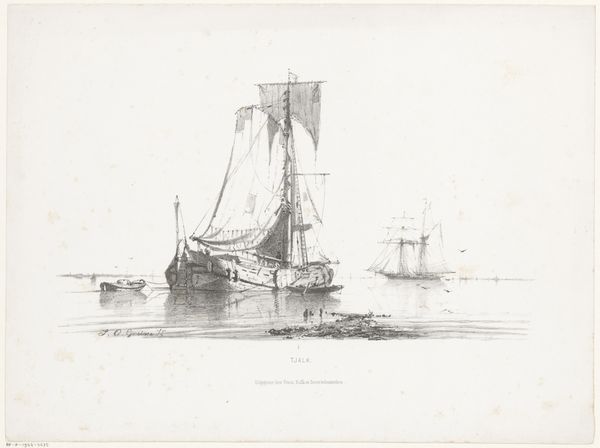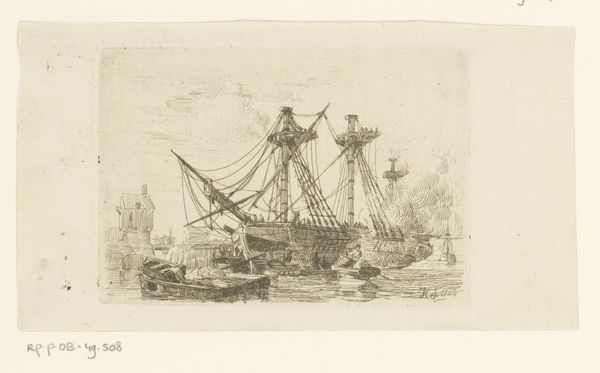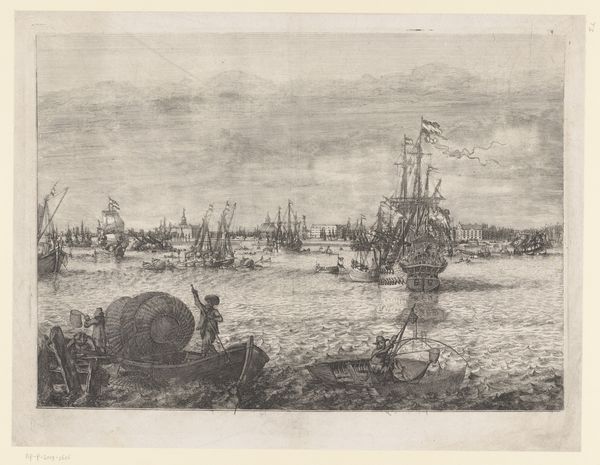
Bij een molen langs een dichtgevroren kanaal in Nederland liggen boten aangemeerd naast een tent op het ijs 1849
0:00
0:00
egidiuslinnig
Rijksmuseum
drawing
#
drawing
#
landscape
#
romanticism
#
genre-painting
#
realism
Dimensions: height 263 mm, width 382 mm
Copyright: Rijks Museum: Open Domain
Editor: We’re looking at a drawing by Egidius Linnig from 1849, titled “Bij een molen langs een dichtgevroren kanaal in Nederland liggen boten aangemeerd naast een tent op het ijs,” depicting a wintry Dutch scene. There’s a real sense of everyday life, almost journalistic. What strikes you most about this piece? Curator: I’m immediately drawn to the way Linnig captures a specific socio-economic reality. The frozen canal wasn’t just a picturesque backdrop; it represented both hardship and opportunity. The moored boats and tent on the ice, these aren’t leisure activities for most, are they? Editor: Right. The drawing suggests reliance on the frozen canal for transport or perhaps temporary commerce. How does this relate to its historical context? Curator: Mid-19th century Netherlands faced periods of economic stagnation. These genre scenes, seemingly simple, often subtly critique social inequalities or highlight the resourcefulness of common people. Look at how the windmill, a symbol of Dutch prosperity, is juxtaposed with these struggling figures. Do you think this adds to our interpretation? Editor: Absolutely. It creates a visual tension, the idealized landscape versus the lived reality. The composition emphasizes this contrast, the daily life up front and the potential prosperity on the back. Curator: And considering the rise of Realism as an artistic movement at this time, artists like Linnig were deliberately choosing everyday subjects to engage with the socio-political discourse. It challenges the romantic idealization of rural life so prominent before, right? Editor: Yes. The artwork seems to act as a subtle commentary, making us question the idealized versions of landscape art we might be familiar with. Curator: Precisely. Art is never created in a vacuum. This piece allows us to analyze not only artistic skill but the political implications imbedded in a seemingly ordinary winter scene. Editor: I now see how seemingly simple landscape scenes can speak volumes about social dynamics, offering us a lens to view a specific time. Thank you for your insights!
Comments
No comments
Be the first to comment and join the conversation on the ultimate creative platform.
